(Revue Question De. No 4. 1974)
Vers la fin d’un certain ésotérisme
Q. Quelle place accordez-vous à ce que chacun aujourd’hui nomme « l’ésotérisme » ? Voyez-vous dans l’ésotérisme une situation radicalement nouvelle de la vie sociale et religieuse, un signe de transformation de l’Histoire présente ? Est-ce une révolte, le dernier soubresaut d’un monde en train de disparaître ou l’annonce d’une renaissance spirituelle ? Vous avez d’ailleurs intitulé votre dernier ouvrage « la fin de l’ésotérisme ». Qu’entendez-vous par là ?
R. Bien entendu, j’ai choisi un titre provocant, la provocation étant un moyen de communication utile aujourd’hui. Il faut secouer les gens pour qu’ils s’éveillent. Il est bien évident que l’ésotérisme, de par son essence, ne peut pas avoir de fin, dans la mesure où l’on admet que la connaissance en soi est toujours inachevée et inachevable, étant donné que c’est une question d’intensité. Mais « fin » signifie aussi que nous sommes dans une période de désoccultation et qu’il convient de réagir contre une certaine tendance des ésotéristes traditionnels à s’enfermer dans ce qu’ils appellent le secret. Certes, l’ésotérisme, en tant que corps de connaissance, aura toujours une frange secrète, ou plutôt un noyau secret (puisqu’encore une fois il est d’une intensité inachevable) ; mais le secret, en tant que forme moralisatrice de protection d’un corps de doctrine dont on ne connaît d’ailleurs pas le développement, me paraît quelque chose de très dégradé comme conception. C’est contre cela, finalement, que j’ai voulu être provocant. Attaquer les ésotéristes qui se servent dans leurs livres de ces formules : « Je connais beaucoup de choses, mais je ne peux pas les dire », « Je ne veux pas les dire ». Mais qu’ils n’écrivent pas de livres, alors ! Ce qu’on sait, on le sait, et l’on doit le dire. Pourquoi craindre le danger ? Les mots « danger » et « décadence », je ne les emploie pas ou je les mets entre guillemets.
Q. Mais je pense que, pour les ésotéristes qui sont, je crois, beaucoup plus occultistes qu’ésotéristes, il s’agit d’intéresser à tout prix par un pseudo-secret, par des points d’interrogation, par des conditionnels en succession infinie. Alors on voit apparaître dans ce sens de nombreuses collections d’ouvrages qui sont effectivement la fin d’un certain ésotérisme, qui sont l’extrême du vulgaire. Par contre, on peut entendre aussi la fin de l’ésotérisme comme étant son accomplissement.
R. Parfaitement. C’est ainsi que je l’entends, dans le sens supérieur. Quand je parle de désoccultation, il est certain que c’est d’un accomplissement qu’il s’agit. C’est le besoin qu’a tout être qui cherche la connaissance, d’être illuminé par elle, et il est incontestable que l’illumination est un accomplissement. C’est assurément une fin, fin toute relative, bien entendu, que vous ressentez comme un absolu et dont vous savez bien que vous retomberez, quitte ensuite à rechercher une intensité supérieure. Mais il est certain que, chez les ésotéristes dont nous parlons, se développe aujourd’hui une sorte de « décadence ». Par exemple, le mépris qu’ils témoignent à l’Occident, à l’effort scientifique de l’Occident, est quelque chose d’incompréhensible.
Q. Le mépris de René Guénon à l’égard de l’Occident en est le meilleur exemple.
R. Il est très provocant, injuste. Mais Guénon vivait à une époque où il était nécessaire de détruire le scientisme.
Q. Guénon ne pouvant se convertir à l’hindouisme, se convertit à l’islam. Tout plutôt que l’Occident ! Partant de là, il échafaude des théories qui sont en soi assez discutables, celles de la Tradition primordiale. Celle-ci est reléguée dans un temps historique indéterminé, où les hommes sont parfaits, purs et connaissants. Il énonce alors ses idées sur l’initiation. Qu’en pensez-vous ?
R. Les moyens de communication que ces hommes pouvaient avoir avec le monde supérieur, avec le monde invisible, les forces divines ? Je crois qu’il est préférable de ne pas en parler, parce qu’on ne peut pas en parler. Alors, faire de ces êtres du début des temps de la Tradition, des êtres purs, omniscients, etc., cela ne fait pas très sérieux.
Q. Non seulement cela ne fait pas très sérieux, mais on retrouve tout un courant qui est pris chez Saint-Yves d’Alveydre et chez quelques autres, et la tradition de l’Aggartha n’est pas de Guénon.
R. Enfin, ces yeux tournés vers le passé, vers une sorte d’âge d’or perdu, non ! Ce n’est pas conforme à la vocation de l’Occident.
Le rôle de l’initiation
Q. Comment vous situez-vous par rapport aux doctrines « initiatiques » ? Pensez-vous qu’il y ait une initiation possible pour l’homme, la réalisation du « passage », faire mourir le vieil homme et renaître à la vie transcendante ? Qu’est-ce que l’initiation pour vous, et que pensez-vous des ordres initiatiques ?
R. Il se peut très bien qu’à une certaine époque historique, mal déterminée, les rites aient été un mode de communication nécessaire et privilégié, dans la mesure où l’on n’en connaissait pas la signification exacte : une sorte de magie que l’on retrouve dans certaines peuplades d’Afrique. Je crois que les rites d’initiation, tels que les conçoit Guénon, ont eu leur nécessité en Occident à une époque où, justement, la conceptualisation n’avait pas atteint le degré de nécessité et de clarté qu’elle peut atteindre aujourd’hui : de même que, dans certaines peuplades d’Afrique noire, la magie joue un rôle que joue en Europe la science. Je me rappelle l’histoire que me racontait un de mes amis. Il avait été désigné par je ne sais quelle société savante américaine pour faire une enquête auprès de peuplades primitives. Il voit, un jour, une vieille femme qui était en train de regarder le feuillage d’un arbre qui bougeait. Il dit : « Qu’est-ce que vous faites ? » Elle répondit : « Je passe » un message à mon petit-fils qui est à l’école et à qui j’ai oublié de dire ce matin de me rapporter du café. Je lui passe un message par le vent des arbres. » Il s’étonna, bien qu’il fût là pour faire des études sur la télépathie. Il demanda des explications. La femme était très gênée ; elle disait : « Vous êtes très forts, vous êtes de grands magiciens, vous avez le téléphone. » Elle considérait le téléphone comme un instrument de magie plus perfectionné. Le rite est simplement un medium de magie, moins perfectionné que le medium scientifique. C’est tout. Et l’on comprend que, selon les époques, les besoins de rites d’initiation diffèrent.
Q. Ce qui semblerait indiquer qu’aujourd’hui, selon vous, les rites d’initiation, l’appartenance à des sociétés secrètes, choses tant prônées par les milieux ésotériques de la fin du siècle dernier, ne représentent plus que l’ultime chatoiement d’un monde en voie de disparition.
R. C’est en ce sens, d’ailleurs, que j’ai parlé de la fin de l’ésotérisme — la fin d’un certain ésotérisme.
Le Renouveau de l’Occident
Q. Votre recherche politique se fonde sur une double connaissance : connaissance du monde spirituel traditionnel et connaissance de la technocratie moderne. Dès après la Seconde Guerre mondiale, vous avez entrepris une pénétrante méditation sur le rôle de l’Europe dans la politique future.
R. Depuis la guerre, l’Europe ne joue plus de rôle politique, ou, si elle essaie d’en jouer un, vous voyez au milieu de quelles difficultés et à quel niveau inférieur ! Actuellement, l’Europe, par l’intermédiaire des sociétés multinationales, est colonisée par l’aire américano-russe. De même, sur le plan de la recherche intellectuelle, palle marxisme russe. Nous avons à présent une aire américano-russe occidentale et une aire tibéto-chinoise. C’est dans ce sens que je donne à l’absorption du Tibet par la Chine une signification sacrée. Il y a là une véritable « théophagie ». Et c’est cela qui donne toute son amplitude au conflit est-ouest maintenant. L’Orient apparaît, de nos jours, devant la dégénérescence des religions occidentales, comme le porteur d’une puissance spirituelle par la révolution culturelle. Mais ce n’est là qu’une vision profane.
Q. Alors, selon vous, la Chine ne pourrait pas nous apporter, à nous Occidentaux, un renouveau des forces ordonnées face à une évidente dégénérescence des croyances judéo-chrétiennes et à un retour brutal des formes les plus frustes du paganisme ?
R. Je ne crois pas. Je crois que la révolution culturelle chinoise est une révolution collectiviste. Il est incontestable qu’en Chine, par exemple, les problèmes de l’homme intérieur ne sont pas posés. Le problème du sexe, celui de l’art, le problème métaphysique de la mort et de la religion sont éludés par le marxisme chinois. Or ce sont ces problèmes-là qui, dans l’invisible, commandent l’activité de la « prêtrise » occidentale à venir.
Les nouveaux prêtres… et les hippies
Q. Cette « prêtrise » invisible est-elle la suite moderne de l’antique caste des brahmanes védiques ? Voyez-vous en cela un renouveau possible à l’idée de castes ?
R. Absolument pas. Les prêtres invisibles sont des hommes qui passent au-delà des castes. Alors que les hommes de connaissance, les brahmanes, veulent institutionnaliser la connaissance, c’est-à-dire l’enfermer dans des églises, les prêtres invisibles refusent de se laisser institutionnaliser. Eux seuls sont les prêtres de la fin des temps, les nouveaux prophètes.
Q. Il est bon alors de rappeler qu’aux trois castes le plus communément admises prêtres, guerriers, agriculteurs vous opposez une vision nettement plus équilibrée de la société avec une division en quatre castes. Ces quatre castes seraient sommairement ordonnées comme suit : hommes de connaissance, de puissance, de gestion, d’exécution. Mais se pose à nouveau aujourd’hui le problème des hors-castes, les hippies et autres contestataires modernes.
R. Vous avez raison, et je suis persuadé que la mauvaise conception actuelle des quatre castes conduit à une méconnaissance de la hors-caste : celle d’en-bas disons les hippies — mais également celle d’en haut, les prêtres invisibles. Il y a incontestablement la caste des hippies qui refusent justement d’être des hommes d’exécution, de travail, mais qui ne sont pas, bien entendu, des « brahmanes ». Ils sont dans une hors-caste indéfinissable, et je crois cependant que leur rôle est capital, car c’est là que germent, dans ce terreau d’humus indifférencié, les nouvelles générations de castes. De ce point de vue, on peut même imaginer toute une sorte de géographie sacrée qui préciserait les zones de l’hémisphère occidental où apparaissent ces castes.
La notion de géographie sacrée
Q. L’existence de certaines zones privilégiées, de régions chargées de forces, d’énergies particulières, c’est pour vous, je crois, la géographie sacrée ou, tout au moins, sa structure de base. Ainsi, dans cette conception du monde, vous accordez à la Californie un rôle déterminant dans l’évolution et le développement des nouvelles hors-castes.
R. Oui, pour moi, sur un plan symbolique, la Californie est une ligne qui marque la limite à l’extrême ouest de l’Occident. Elle s’oppose à l’Amérique ; la Californie n’est pas du tout l’Amérique. Et c’est justement ce qui m’a conduit à penser qu’il y avait un symbolisme considérable dans la révolte des étudiants de Berkeley en 1964, qui a été la première manifestation dans le monde de la révolte des étudiants.
Q. Si la Californie n’est pas l’Amérique, mais l’Extrême-Occident, l’Occident n’est pas l’Europe. Je crois même que vous faites une différence fondamentale qui est, en quelque sorte, l’assise de votre géographie sacrée.
R. La distinction entre l’Europe et l’Occident est, pour moi, fondamentale. Dans notre cycle de temps, nul lieu au monde n’eut plus que l’Europe l’illusion de faire naître l’Histoire. L’Europe s’est vue comme déterminant et écrivant l’Histoire tout entière du cycle terrestre actuellement en cours, et une Histoire de plus en plus dense et dramatique. Je fais de la distinction Europe-Occident une clef fondamentale. Ainsi, l’Europe est construite, l’Occident est constitué. L’Est est le support d’une infinité passée, l’Ouest celui d’une infinité à venir : l’Occident est, entre eux, celui d’une infinité présente. Mais c’est justement parce que l’homme européen est pris actuellement dans l’implication infinie des liaisons historiques, et qu’il y est pris seul, qu’il est, à l’état naissant, le porteur de l’être occidental capable de transcender l’Histoire, de la vider de ses événements isolés et passagers et de faire émerger, ici et maintenant, une nouvelle conscience dans le monde. L’Occident est d’abord vision absolue du monde et de lui-même par la découverte d’une structure absolue. L’Europe vit en mode d’ampleur, l’Occident en mode d’intensité. L’Europe veut progresser en mode de sédimentation, l’Occident se résout en mode de cristallisation.
Q. Quel sens donnez-vous à cette opposition ?
R. Un sens dialectique. Ainsi l’Europe se livre au temps tandis que l’Occident lui échappe. L’Europe paraît fixe dans l’espace, c’est-à-dire dans la géographie, tandis que l’Occident y est mobile et déplace son épicentre terrestre selon le mouvement des avant-gardes civilisées. L’Europe est provisoire, l’Occident est éternel. Un jour, l’Europe sera politiquement effacée des cartes, mais l’Occident vivra toujours. L’Occident est partout où la conscience devient majeure.
Révélation et illumination
Q. Vous accordez une importance fondamentale à la notion de révélation dans toute votre œuvre. Vous acceptez l’idée qu’une connaissance peut venir subitement, sans apport intellectuel ; cette connaissance résume alors des formes très diverses du savoir. Elle est la gnose à l’état pur, une réalité universelle qui, soudain, relie l’homme à l’infini.
R. Tous, autant que nous sommes, nous avons eu des moments où la certitude en nous se passait de preuves. Ma propre certitude, à certains moments de ma vie, a été totale, immédiate, fulgurante. C’est ainsi que je puis vous dire, et de façon très précise, que j’ai reçu la révélation de ma clef numérique de la Kabbale le 5 avril 1946 à dix heures du matin, le Vendredi saint de cette année-là. La liste des valeurs ésotériques des nombres m’est venue globalement, sans nuance. Elle m’est tombée dessus comme un coup de tonnerre, à tel point que, pendant trois heures, je suis resté paralysé, dans un état d’immobilité absolue. Je brûlais et j’avais l’impression que ma tête allait éclater. Quand j’ai enfin pu me déplacer, je suis allé me coucher sous une tente qui était au fond du jardin. Pendant ce repos, chaque fois que j’essayais de deviner le sens précis de ma révélation, j’avais l’impression que tout pouvait sauter en moi. Une idée de plus, et mon cerveau sautait ; c’était bien un court-circuit qui s’était produit entre deux univers, le mien, celui de l’homme, et l’autre, celui de la révélation, du savoir infini, de la gnose abrupte. La notion de choc dans la révélation est, pour moi, très importante ; car je l’ai reçue comme un coup de bâton, direct, sans pitié, sans faiblesse. Mais il est, je crois, bien inutile de vous dire qu’au moment où j’ai reçu cette connaissance subite, je n’avais qu’une idée très vague de ce que la révélation m’apportait. Disons que je venais d’accrocher l’idée centrale. Ensuite, j’ai dû procéder aux applications intellectuelles. La révélation est comme un objet brut ; le stade de l’exégèse intellectuelle est celui du raffinement.
Q. Considérez-vous la découverte abrupte, la révélation comme la vérité absolue ?
R. Pas nécessairement. La certitude, aussi forte soit-elle, n’est pas forcément la vérité, même si elle s’accompagne de phénomènes étranges qui s’apparentent à ce que communément l’on nomme « Révélation ». La révélation n’est pas, pour autant, un terrain vague, une certitude reçue à travers un voile, le donné abstrait à partir duquel on tirera des élucubrations plus ou moins confuses. Elle est, au contraire, parfaite et précise ; elle s’apparente totalement à la gnose, c’est vrai ; or la gnose, c’est le domaine de la certitude absolue, instantanée et totale, sinon celui de la vérité.
Q. Du reste, dès que l’on se situe à ce niveau de la perception spirituelle, le mot « vérité », tel qu’il est communément utilisé, ne veut plus rien dire. La révélation transmise à l’homme qui vit dans le temps, dans les dimensions de l’espace, se heurte évidemment à un mur, le mur du temps. La connaissance ou la certitude intemporelles sont récupérées par des êtres qui vivent dans le temps. Ce glissement de l’intemporel au temporel affaiblit sans doute la révélation, lui fait perdre cette force immédiate, totale, instantanée et infinie qu’elle possède en elle-même.
R. Vous avez raison. Mais c’est la force de la loi du progrès : la loi de l’homme. La loi étant historique, soumise à la succession du temps, nous n’avons pas la prétention de tout vivre, de tout assumer, de tout comprendre, même nos propres moments de certitude, de révélation. Nous vivons cependant à certains moments dans des rapports privilégiés avec l’étincelle éternelle, avec l’Un informel : c’est alors la réalisation de l’homme intérieur, l’homme intérieur qui est en assomption tout au long des siècles, une assomption qui trouve sa plénitude, sa pleine réalité à chaque instant éternel de la révélation.
***
MEDITATION POUR LES DERNIÈRES FOIS
Heureux celui qui sait ne pas donner de raisons vaniteuses à ses défaites. Et encore plus heureux celui qui sait qu’il n’est pas de défaites.
Partout où nous irons désormais nous porterons en nous ce monde horizontal. Il est celui des ténèbres extérieures.
Mais la grande nouveauté est celle-ci : Ce monde ne sera plus jamais trop grand pour nous, c’est nous qui sommes devenus trop grands pour lui. Jamais plus nous ne pourrons dire comme Moïse : Je verrai la terre promise et je mourrai.
Nous avons déjà vu toutes les terres promises et nous survivons.
Ce soir, je rêve d’Archimède, insensible au tumulte des guerres et traçant sur le sable, du bout de sa canne, les figures géométriques de son énigme intérieure, tandis que le soldat, irrité, l’interpelle et se prépare à le tuer. Nous sommes voués comme lui à une connaissance et une immobilité infinies. En elles se tiennent toute dévotion, tout amour, toute adoration, tout accomplissement, tout service.
Et même si le sens de ce dernier mot nous échappe car il englobe tous les sens, et si, plus encore qu’à nous, il échappe aux Barbares, que ces derniers au moins, quand ils viendront, nous trouvent d’abord attentifs à notre art.
Rien ne peut sauver les corps. Mais on peut rêver d’un regard si plein de connaissance humaine que les corps tout entiers se perdent dans ce regard. Un jour, en rencontrant les yeux de l’homme immobile, l’assassin le moins capable de retour sur soi saura que cet assassiné était plus grand que lui. Au cœur le plus sensible de l’Europe, à l’endroit d’où elle se croit le plus absente, s’accumulent ce comble de refus et ce comble d’attention qui, par la réversibilité mystérieuse du rachat, constituent au contraire sa vraie présence.
Le goût des formes et des bavardages, la hâte du présent et la déception du lendemain, les petits brigandages politiques, le cynisme sans risques, la vulgarité des riches et la soumission des pauvres, et, par-dessus tout, l’impuissante nostalgie d’une beauté qui se refuse et d’une vérité qui se perd, composent une sorte de cri profond qui monte des plaines d’Europe, mais qui stagne dessus comme un brouillard d’hiver.
Ce désordre est trop grand. Comment en démêler les fils ? On peut aujourd’hui donner une sorte de curiosité fraternelle à ceux qui veulent mettre de l’ordre dans ce qu’on appelle le monde, et qui se jettent dans la foule.
Mais il y a temps pour tout sous le soleil.
Aujourd’hui, ce n’est pas dans ce monde qu’il faut mettre de l’ordre, mais dans nos pensées. Nous avons fait dans le monde assez d’expériences, et ce n’est pas en vain que nous en avons traîné le poids si haut. Le monde est ici, pas ailleurs.
J’essaie d’imaginer ce que pourront être ces heures de la transfiguration, quand les guerriers se feront prêtres, et, n’ayant plus rien à défendre qui ne soit détruit, se découvriront les hommes les plus riches du monde.
Extrait de l’Assomption de l’Europe (Paris, Flammarion, 1953).
POUR MIEUX CONNAÎTRE RAYMOND ABELLIO
De son vrai nom Georges Soulès, Raymond Abellio est ne le 11 novembre 1907 d Toulouse.
De 1930 à 1932, il est élève de l’École des ponts et chaussées. Ingénieur enfin, il commence une carrière qui le conduit dans la Drôme. C’est là qu’il prend contact avec le monde politique. Des 1932, il est nommé secrétaire fédéral adjoint de la S.F.I.O. En 1935, il est un des dirigeants de la dissidence socialiste connue sous le nom de Gauche révolutionnaire. A Paris, en 1936, il entre au cabinet de Jules Much. A partir de 1937, il est un des dirigeants du Parti socialiste, tout en gardant très évidente son optique Gauche révolutionnaires, que développent encore ses études marxistes et trotskystes.
Au cours des combats de 1940, il est fait prisonnier à Calais et se retrouve, pour quelque temps, dans un camp d’internement en Allemagne. Cette triste période sera occupée par quantité de réflexions. Il se lie avec différents officiers cagoulards qui partagent la même captivité. Ses options politiques sont remises en cause. Le marxisme, qu’il considéra toujours comme valable du point de vue de l’analyse économique et comme philosophie réflexive, l’a déçu, au moment de la guerre d’Espagne et du pacte Staline-Laval.
Pendant la guerre
En 1941, il est libéré et rentre en France. Il s’inscrit au Mouvement social révolutionnaire de Deloncle, dont il devient l’adjoint. Les rapports avec l’occupant restent tendus, malgré l’apparente reconnaissance du Mouvement social révolutionnaire par le nazisme.
L’année suivante, en 1942, un fait va déterminer le cours de l’évolution intellectuelle de Georges Soulès : sa rencontre avec Pierre de Combas. Ce dernier a une connaissance remarquable des grandes philosophies et doctrines traditionnelles, du judaïsme à l’hindouisme. Il a étudié les mouvements occultes et ésotériques occidentaux par ailleurs, il possède une excellente documentation sur les différents mystiques.
C’est Pierre de Combas qui, notamment, déterminera son évolution critique en face de la pensée de René Guénon.
La découverte de Husserl
Georges Soulès est bien à la recherche de tout autre chose. Son but : découvrir le véritable cheminement qui irait de la Tradition jusqu’à l’exploitation de toutes les ouvertures scientifiques offertes par le monde moderne. C’est dans ce sens, la découverte de Husserl et de la phénoménologie, découverte qui restera un des premiers événements de sa vie spéculative. La tradition hébraïque lui apporte, avec la Kabbale, les éléments du savoir religieux initiatique, tandis que la phénoménologie lui permet d’acquérir une méthode prospective et une charpente méthodique qui manquent aux traditions étudiées comme telles.
Dès cette époque sont en gestation les thèmes fondamentaux qui formeront la trame philosophique de ses livres. Selon lui, le politicien moderne est loin de représenter une vision réelle de ce que devrait être la politique authentique. Celle-ci serait, selon Soulès, appuyée à la fois sur un organisme de sociétés secrètes recelant des connaissances traditionnelles et sur un développement scientifique des facultés métapsychiques, afin d’influer, sans autres moyens que la réalisation mentale, sur les foules. La géopolitique occupe également une place dans la construction de son système. Les différents États, les continents eux-mêmes sont, certes, des réalités évidentes. Mais celles-ci ne sont quand même que les jouets de forces cosmiques et telluriques dont une plus exacte connaissance serait indispensable, afin d’accéder à la parfaite réalisation d’un pouvoir à la fois occulte et politique.
Après la guerre
En 1944, sa position devient de plus en plus difficile. Bientôt, on le recherche, et il doit se cacher.
En 1945, ce sont les gaullistes qui, à leur tour, le poursuivent. Commence alors pour lui une vie de traqué et de vagabond. Enfin, il quitte la France A la fin de février 1947. La Suisse sera son lieu d’exil jusqu’en 1951, époque à laquelle, à la suite d’un non-lieu, il rentre à Paris.
Ses années de fuite et d’exil furent les plus fructueuses, spirituellement. Sa vision du monde atteint un aspect prophétique. En 1946, il fait paraître, sous le pseudonyme d’Abellio, son premier livre. C’est un roman, Heureux les pacifiques, qui sera suivi de Les yeux d’Ezéchiel sont ouverts ; enfin, beaucoup plus tard, de la Fosse de Babel. Ces trois livres forment une trilogie romanesque sur laquelle il fonde la partie la plus publique de son œuvre. Parallèlement, il développera des recherches, avec la Bible, document chiffré, Vers un nouveau prophétisme, Assomption de l’Europe et la Structure absolue (1965).
Ce dernier ouvrage, véritable somme philosophique, est une recherche fondée sur l’ésotérisme et la phénoménologie afin de cerner la clé universelle de l’être et du devenir, des situations et des mutations.
Le monde futur
Vers un nouveau prophétisme est un « essai sur le rôle du sacré et la situation de Lucifer dans le monde moderne ». L’Occident — et l’Europe en particulier — n’a pas terminé son rôle sur la grande scène de l’Histoire. L’ultime Occident est à naître, « quand les guerriers se feront prêtres et, n’ayant plus rien à défendre qui ne soit détruit, se découvriront les hommes les plus riches du monde » (Abellio, Assomption de l’Europe).
Abellio reconnaît que nous vivons la fin d’un cycle, les dernières saccades de l’agonie. Mais cette agonie est à la mesure de notre formidable destin luciférien. L’Europe accède à son assomption et le monde entier se développe et vit et meurt selon nos concepts, nos religions, nos hérésies et nos systèmes politiques.
Une situation retient tout particulièrement son attention : celle de la Chine, Abellio ne cache pas un certain pessimisme qui s’accompagne de visions apocalyptiques dans la Fosse de Babel.
OEUVRES DE RAYMOND ABELLIO
Aux éditions Flammarion :
« Heureux les. Pacifiques », roman
« Assomption de l’Europe », essai
« La fin de l’ésotérisme », essai
Aux éditions Gallimard :
« Les yeux d’Ezéchiel sont ouverts », roman
« Vers un nouveau prophétisme », essai
« La Bible, document chiffré », 2 vol., essai
« La fosse de Babel », roman
« La structure absolue », essai
« Ma dernière mémoire », récit, le tome I est, jusqu’à présent, seul paru
« Un faubourg de Toulouse »
Dans une âme et un corps », Journal de l’année 1971
 Par Amaury Watremez. A propos de la sortie en Folio d’une partie de la correspondance de Céline, les Lettres à la NRF, passionnantes.
Par Amaury Watremez. A propos de la sortie en Folio d’une partie de la correspondance de Céline, les Lettres à la NRF, passionnantes.



 del.icio.us
del.icio.us
 Digg
Digg
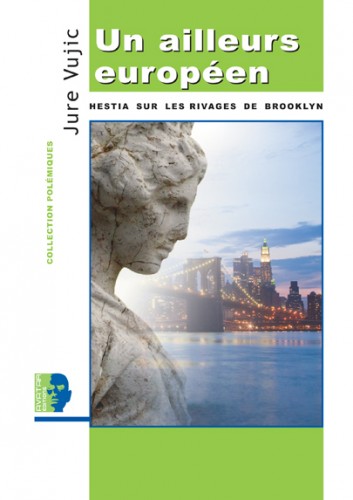 „La tradition est inversée. L’Europe ne raconte plus l’Occident. C’est l’Occident qui comte l’Europe. La marche en avant des proto-iraniens, peuples de cavaliers vers leur foyer « européen », la « hache barbare » du peuple des demi-dieux hyperboréens, Alexandre, Charlemagne, Hoffenstaufen, Charles Quint, Napoléon ne font plus rêver. L’Occident hyperréel sublimé, le mirage du « standing », du bonheur à la carte est le songe éveillé et névrotique du quart-monde favellisé, d’un imaginaire tiers-mondiste « bolly-woodisé ». Il n’y a plus de grand métarécit européen faute de diégèse authentiquemment européenne. La « mimesis vidéosphérique » occidentale dévoile, déshabille, montre et remontre dans l’excès de transparence. Loin des rivages de l’Hellade, Hestia s’est trouvé un nouveau foyer sur les bords de Brooklyn, aussi banal et anonyme que les milliers d’« excréments existentiels » qui jonchent les rivages de Long Island.“
„La tradition est inversée. L’Europe ne raconte plus l’Occident. C’est l’Occident qui comte l’Europe. La marche en avant des proto-iraniens, peuples de cavaliers vers leur foyer « européen », la « hache barbare » du peuple des demi-dieux hyperboréens, Alexandre, Charlemagne, Hoffenstaufen, Charles Quint, Napoléon ne font plus rêver. L’Occident hyperréel sublimé, le mirage du « standing », du bonheur à la carte est le songe éveillé et névrotique du quart-monde favellisé, d’un imaginaire tiers-mondiste « bolly-woodisé ». Il n’y a plus de grand métarécit européen faute de diégèse authentiquemment européenne. La « mimesis vidéosphérique » occidentale dévoile, déshabille, montre et remontre dans l’excès de transparence. Loin des rivages de l’Hellade, Hestia s’est trouvé un nouveau foyer sur les bords de Brooklyn, aussi banal et anonyme que les milliers d’« excréments existentiels » qui jonchent les rivages de Long Island.“ En abordant la question du devenir de l’Europe, l’auteur rend compte des mutations du „monde européen“ contemporain dans le sens symbolique, essentialiste et métaphysique, asphyxié sous l’empire d'un „occidentalo-centrisme“ mécaniciste qui l'a indéniablement absorbé et consumé, est qui du reste constitue son degré zéro de la puissance symbolique.
En abordant la question du devenir de l’Europe, l’auteur rend compte des mutations du „monde européen“ contemporain dans le sens symbolique, essentialiste et métaphysique, asphyxié sous l’empire d'un „occidentalo-centrisme“ mécaniciste qui l'a indéniablement absorbé et consumé, est qui du reste constitue son degré zéro de la puissance symbolique.

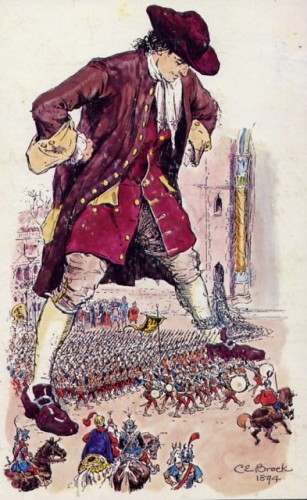
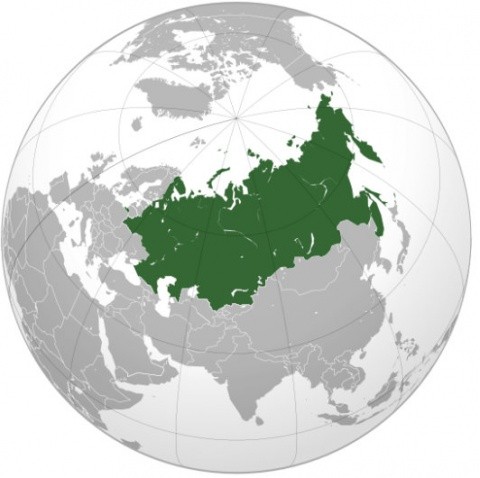

![[Book cover]](http://cdn.counter-currents.com/wp-content/uploads/2011/09/Book-cover.jpg)





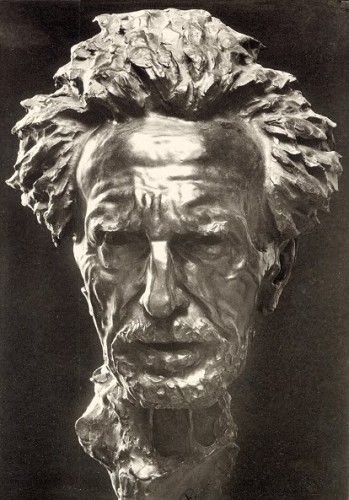

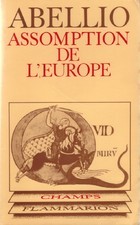 En 1978, l’éditorialiste du Figaro-Magazine constate la désuétude du clivage idéologique Droite-Gauche. Louis Pauwels appelle de ses vœux une « redistribution des cartes », une recomposition des familles de pensée selon des critères « métapolitiques ». Un de ces critères est la vision de l’histoire.
En 1978, l’éditorialiste du Figaro-Magazine constate la désuétude du clivage idéologique Droite-Gauche. Louis Pauwels appelle de ses vœux une « redistribution des cartes », une recomposition des familles de pensée selon des critères « métapolitiques ». Un de ces critères est la vision de l’histoire. Mais remontons avec l’auteur à l’une des principales sources de « l’activisme européen » : la conquista des Amériques du Sud et centrale. Elle a vidé ces régions « de toute sève et de toute richesse pour en gorger l’Europe du moment, en sorte que les nations ibériques faillirent en mourir de pléthore et de paresse et furent même de ce fait écartées pour longtemps de l’activisme européen » (p. 233). A présent mûre pour un « futur engrossement » (p. 234), disponible pour accueillir une « migration du germe occidental » (p. 230), l’Amérique dite « latine » peut former avec l’Europe un des grands axes géopolitiques de demain, une sorte d’empire transocéanique reposant sur une puissante symbolique.
Mais remontons avec l’auteur à l’une des principales sources de « l’activisme européen » : la conquista des Amériques du Sud et centrale. Elle a vidé ces régions « de toute sève et de toute richesse pour en gorger l’Europe du moment, en sorte que les nations ibériques faillirent en mourir de pléthore et de paresse et furent même de ce fait écartées pour longtemps de l’activisme européen » (p. 233). A présent mûre pour un « futur engrossement » (p. 234), disponible pour accueillir une « migration du germe occidental » (p. 230), l’Amérique dite « latine » peut former avec l’Europe un des grands axes géopolitiques de demain, une sorte d’empire transocéanique reposant sur une puissante symbolique. La « structure absolue » est l’inversion d’inversion en tant que processus intensificateur. Les valeurs symboliques des découvertes d’Uranus (1781) et de Neptune (1846) résident dans leur respective coïncidence avec les révolutions libérales bourgeoises et l’éclosion des mouvements ouvriers. Invertissant l’Ancien Régime, l’individualisme uranien est à son tour inverti par le collectivisme neptunien. Mais ce dernier intensifie le facteur Uranus sous la forme du culte de la personnalité propre à tous les régimes totalitaires : Führer, « père des peuples », « grand timonier », autant de variétés de l’archétype du « chef oriental » (p. 154).
La « structure absolue » est l’inversion d’inversion en tant que processus intensificateur. Les valeurs symboliques des découvertes d’Uranus (1781) et de Neptune (1846) résident dans leur respective coïncidence avec les révolutions libérales bourgeoises et l’éclosion des mouvements ouvriers. Invertissant l’Ancien Régime, l’individualisme uranien est à son tour inverti par le collectivisme neptunien. Mais ce dernier intensifie le facteur Uranus sous la forme du culte de la personnalité propre à tous les régimes totalitaires : Führer, « père des peuples », « grand timonier », autant de variétés de l’archétype du « chef oriental » (p. 154).